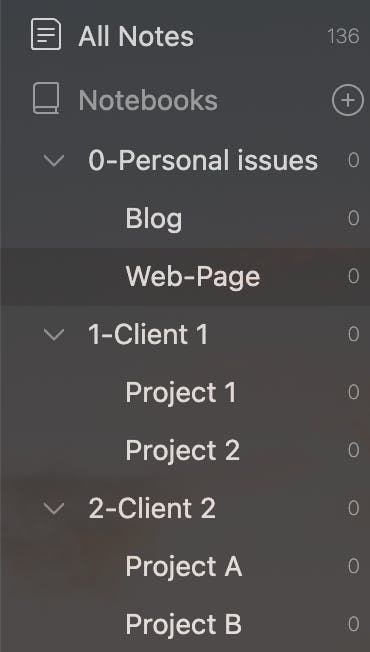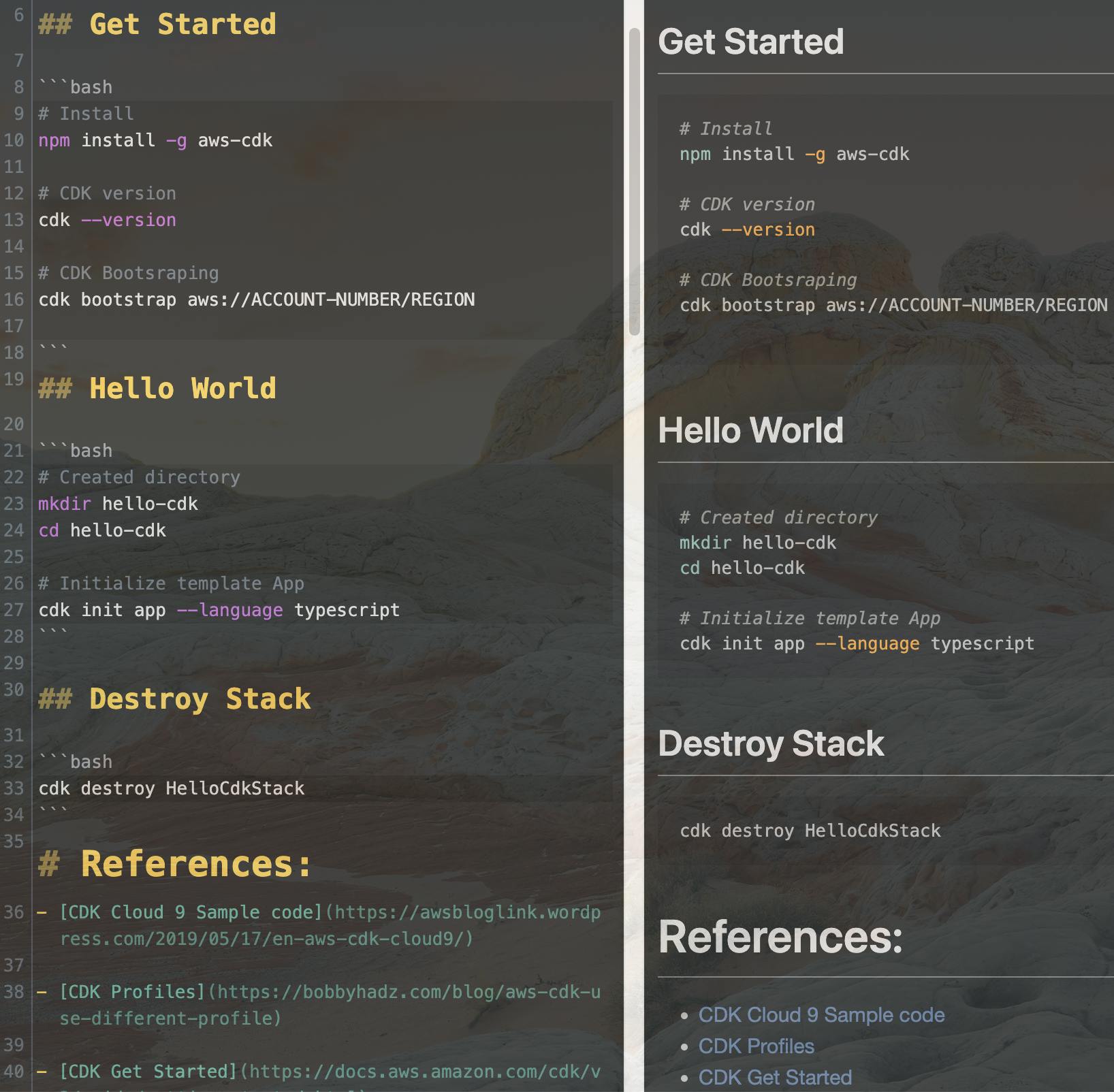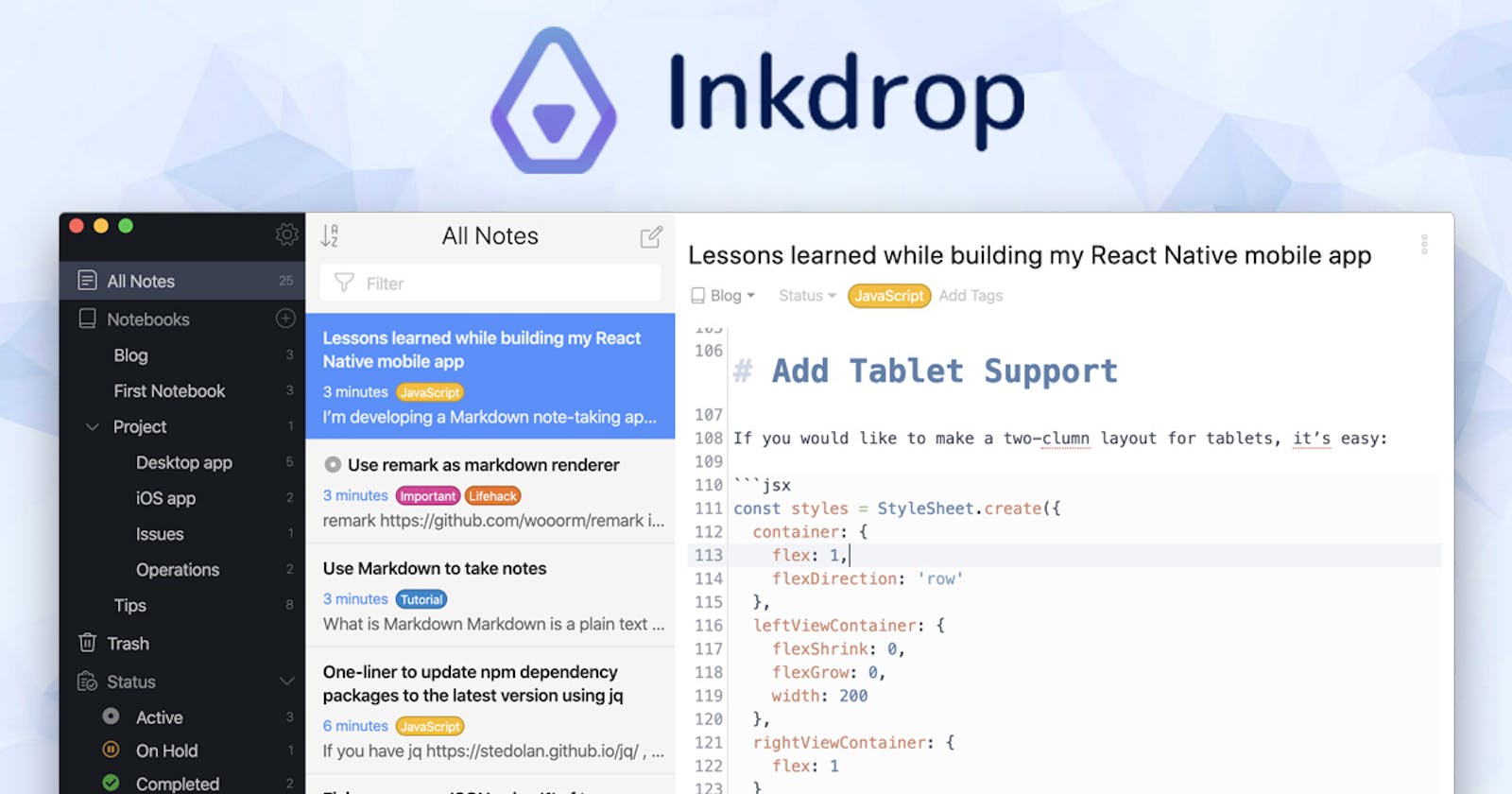In a recent article published by the creator of Inkdrop, he discusses how the Inkdrop app is used within the community.
Based on this article, I'd like to share a summary of how I've used Inkdrop.
First: What is Inkdrop?
Inkdrop is a note-taking App that uses Markdown and is available for both desktop and mobile. It focuses on enhancing the software development process and improving productivity.
In the words of the creator:
Get a low-friction personal note-taking workflow and accomplish more. With your notes well-organized effortlessly, you can stay focused on doing your best work. --https://www.inkdrop.app/
I'm a freelance cloud developer who works on various projects for different clients. I've been using Inkdrop for the past four months. It's a great tool that serves not only as a note-taking application but also as an organized repository of knowledge and references.
Similarly, I am relatively new to Inkdrop and am continuously learning. I'd like to share my journey…
The Structure, How I Organize the Folders
I categorize my folders based on customers. I create individual folders dedicated to each customer. Within each folder, there is an assortment of files. I also use tags as another method to categorize my notes. Combining these two approaches has proven to be highly effective for me.

The notes, How I organize the notes
I have templates depending on the type of note, but for a new note I think by default the following structure:

What is my default template for projects? My default template for projects includes a title with basic information, along with two default sections: 'Details' and 'References', I write explanations, ideas, and definitions… and it always includes block code references. I always add links or repositories as references.
I also use templates that are cross-project, such as tutorial and research templates. For example: A tutorial note.

The tags: Semantic approach
I use tags in Inkdrop as a semantic approach, where the order and meaning of tags are important. For example:
#customer #desing #dev

To me, this note is about #desing for a #development task from a #customer. The order and context make sense. I replace the #customer's tags name with the specific customer name #mycustomer.
Another example:
#customer #research #feature

To me, this is a note from a #customer that requires #research for a new #feature.
I create my tags using this approach.
Next steps
This is my approach. In another blog post, I'll share my plugins and how I use them in my daily development process.
References:
Inkdrop: https://www.inkdrop.app/
How I take tech notes as a note app author: https://www.youtube.com/watch?v=rjOuCFrs584
How I take tech notes as a note app author How to take notes in Markdown efficiently with Inkdrop: https://www.youtube.com/watch?v=-qBavwqc_mY

